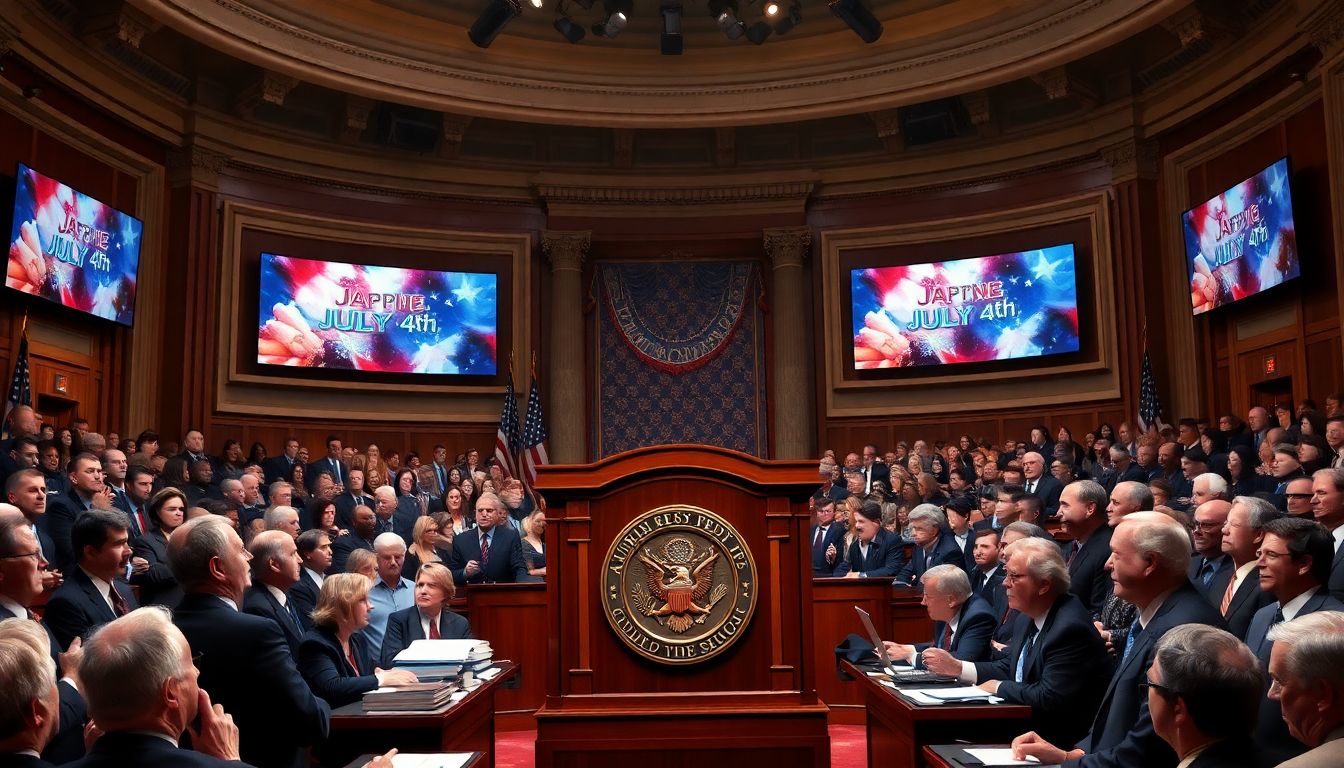
Introduction
The recent Senate vote on Donald Trump’s new bill has shaken up American politics. With a tight 51-49 margin, this legislation heads for debate and could reshape policy in several areas. The timing is no accident—Republicans want to see it pass before July 4, making it a key part of their mid-year push. This bill isn’t just another proposal; it’s a bold move that might influence elections and the future of government priorities.
Senate Approval of Trump’s ‘Big Beautiful Bill’ Marks Major Milestone
Background of the Bill
The bill, often called the “Big Beautiful Bill,” aims to overhaul economic and security policies. Its main goals are to boost the economy, strengthen national defenses, and improve infrastructure. Donald Trump introduced it amid rising concerns over job growth and border security. Early reactions varied: supporters praised the bold approach, while critics warned it could cause long-term issues.
The Senate Vote: 51-49
The vote was razor-thin, showing how divided the Senate really is. Most Republicans voted “yes,” eager to advance Trump’s vision. Democrats largely opposed, citing worries about costs and fairness. The result mirrors the deep political divide that’s shaping every major decision in Washington today. This slim majority means lawmakers must work fast to keep momentum alive.
Political Implications
Passing this bill could energize Trump supporters and boost Republican chances in upcoming elections. It’s clear that both parties are using the legislation to showcase their priorities. For Democrats, it’s a frustration—seeing a bill with such ambitions approved with narrow support. For Republicans, it’s a chance to rally behind a key agenda before the midterm elections.
Key Features and Goals of the Bill
Main Objectives
The “Big Beautiful Bill” covers a lot of ground. Some focus areas include:
- Accelerating economic growth through tax reforms
- Increasing defense and border security spending
- Investing heavily in infrastructure upgrades It also touches on healthcare reforms and measures to support small businesses.
Funding and Budget Impact
It proposes significant new spending, mostly through increased borrowing and reallocating existing funds. Critics warn this could balloon the national debt, while supporters say it’s necessary for growth. The bill aims to align with current budget plans but has faced questions about long-term financial sustainability.
Social and Economic Impact
If passed, the bill could create jobs and boost wages, especially in manufacturing and construction sectors. Still, some worry it favors corporations over consumers or truthfully, that it may widen inequality. The debate over social impact remains fierce, with opponents warning of potential negative consequences.
Republican Strategy to Accelerate Passage by July 4
The Push for a Fast-Track Process
With July 4 just around the corner, GOP leaders are eager to push the bill through quickly. They’re using special legislative rules to speed up debate and limit delays. The goal? Show voters momentum and achievement before the summer begins.
Key Supporters and Opposition
Prominent Republican figures like Senate leaders are rallying support, emphasizing the bill’s economic and security benefits. Meanwhile, Democrats are pushing back hard, raising concerns about transparency and the bill’s effects on vulnerable groups. Some Republicans also voice caution, fearing the rushed process might lead to flawed legislation.
Political Benefits
Timing is everything. Passing the bill before Independence Day gives Republicans a patriotic narrative and an advantage heading into midterm races. It also demonstrates strong party unity, which can be a winning message during election season.
Challenges and Criticisms Surrounding the Bill
Democratic Concerns
Democrats argue the bill risks increasing inequality and favors big corporations over average Americans. They also worry that rushing it through the Senate limits meaningful debate and fixes. Some warn it could cause long-term economic instability if not carefully reviewed.
Legal and Constitutional Questions
Legal experts are raising questions about some parts of the bill. They’re watching for possible clashes with existing laws or constitutional limits, especially regarding funding provisions and executive powers. Experts insist proper legal review is crucial before full implementation.
Public Opinion and Media Perspectives
Polls show mixed reactions from the public, with many concerned about the costs and priorities outlined in the bill. Media outlets frame it as either a bold step or a risky gamble. Public support will likely hinge on how the bill performs during debate and the final version that emerges.
Next Steps and What to Expect Moving Forward
Senate Debate and Amendments
The bill now heads to detailed committee discussions. Lawmakers are expected to propose amendments to address concerns or improve clarity. This process could take weeks, or even longer, before a final vote.
House of Representatives Consideration
Once the Senate wraps up, the bill moves to the House. House members could add their own changes or delay the process. Passing it there might require further negotiations. Timing will be tight, especially with the July 4 deadline looming.
Presidential Review and Implementation
If both chambers approve, the bill lands on the President’s desk. It’s likely he’ll review it closely—either signing it into law or vetoing parts. Implementation, if approved, could take months, with agencies working to put policies into action.
Conclusion
The Senate’s approval of Donald Trump’s “Big Beautiful Bill” marks a turning point in legislative effort. With a narrow vote, the bill now faces intense debate and quick passage efforts, all in time for July 4. Its success or failure will shape policy direction and political dynamics for months to come. As this story unfolds, it’s clear that this legislation is more than just words—it’s a reflection of the current partisan battle shaping America.
Stay tuned for updates on this historic bill as it moves closer to becoming law. The next few weeks will reveal whether political priorities align or if the bill hits major roadblocks. Whatever happens, one thing’s certain: it’s a pivotal moment for U.S. policy and politics.
